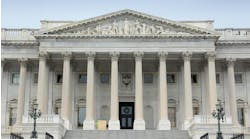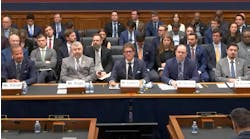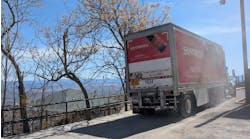The bipartisan leadership of the Senate Environment and Public Works (EPW) Committee and its transportation and infrastructure subcommittee have released the text of legislation (S. 2322) that would reauthorize the current transportation authorization law known as MAP-21 for six years at current funding levels plus inflation.
As currently drafted, S. 2322 does not include a controversial Obama administration proposal to allow states, subject to Dept. of Transportation approval, to toll existing Interstate highways to fund repairs.
"We thank the committee for rejecting the Administration’s ploy to insert tolling into the next highway bill and for moving forward with a bipartisan proposal. We look forward to working with both transportation committees in addressing the challenges facing the highway trust fund while also ensuring that the priorities of small-business truckers are included in a final reauthorization bill," said Norita Taylor, spokesperson for the Owner-Operators Independent Drivers Assn.
The full EPW Committee is scheduled May 15 to consider changes to the proposal and approve the measure for Senate consideration. The committee’s bill, however, addresses only the transportation infrastructure provisions of MAP-21. Provisions related to motor carrier safety programs still must be offered and advanced by the Senate Commerce, Science and Transportation Committee while the Senate Finance Committee still must act to fund the legislation. MAP-21 expires on Sept. 30, but the highway trust fund is projected to run out of funds this summer
S. 2322 includes several provisions related to freight. It establishes a formula-based freight program similar to the one in the Senate-passed version of MAP-21 in 2012 that would provide funds to all states to improve goods movement in key corridors, reducing costs and improving performance for business.
The bill also would expand flexibility for both rural and urban areas to designate key freight corridors that match regional goods movement on roads beyond the Primary Freight Highway Network. And it attempts to improve the identification of projects with a high return on investment through
state freight plans and advisory committees established under MAP-21. For a summary of the entire EPW Committee proposal, click here.
The American Trucking Assns. said it is still evaluating the Senate bill, but it is generally pleased with it. “We would prefer significantly higher funding levels, but we recognize the political barriers involved in finding those revenues,” said ATA President and CEO Bill Graves. “However, we hope that Congress will recognize the need for greater investment and provide additional resources as the reauthorization process moves forward.”
ATA also said it is pleased that the committee has given priority to funding highways with significant freight volumes. “We are also pleased that the committee did not fall prey to the siren call of the tolling industry, and did not expand states’ authority to toll existing Interstates,” Graves said.
The principal organization representing state highway agencies also praised the EPW leadership for proposing a long-term infrastructure bill. “The nature of the projects and programs that state departments of transportation oversee require a long-term view in order to ensure the best investment of federal, state and local tax dollars,” said Bud Wright, executive director of the American Assn. of State Highway and Transportation Officials.
The National League of Cities (NLC) also praised the legislation. “Although we are still analyzing the bill, we hope the Senate’s proposal will be another step forward in the race to reauthorize the critical funding needed to support the nation's transportation system,” said NLC Executive Director Clarence Anthony. “A long-term, holistic transportation plan is needed to create jobs, promote long-term economic development and build a foundation for future growth in communities and the nation.” Anthony said NLC would work with the Obama administration and Congress “to ensure that a long-term bill that has stable funding and provides local governments with resources and input into decisions affecting local communities.”
Although the principal organization representing toll facility owners and operators could have focused on the Senate bill’s failure to authorize Interstate tolling, it chose instead to focus on what it viewed as a positive development on the issue.
“We are pleased that the bill would direct the Secretary to carry out a research program ‘to explore alternative transportation revenue mechanisms that preserve a user fee structure to maintain the long-term solvency of the Highway Trust Fund,” said Patrick Jones, executive director and CEO of the International Bridge, Tunnel and Turnpike Association (IBTTA). “We look forward to working with both Houses of Congress to forge a long-term transportation bill that promotes safety and productivity on the highways and provides a sustainable, predictable and long-term source of funding that is vital to state transportation programs.”
The MAP-21 reauthorization bill came at the beginning of Infrastructure Week 2014, an initiative led by a number of organizations, including the U.S. Council on Competitiveness, the U.S. Chamber of Commerce, the AFL-CIO, the Brookings Institution’s Metropolitan Policy Program and various others. As part of the effort, ATA and the American Association of Railroads are holding a joint meeting May 13 to discuss needs for multimodal transportation infrastructure investment.


